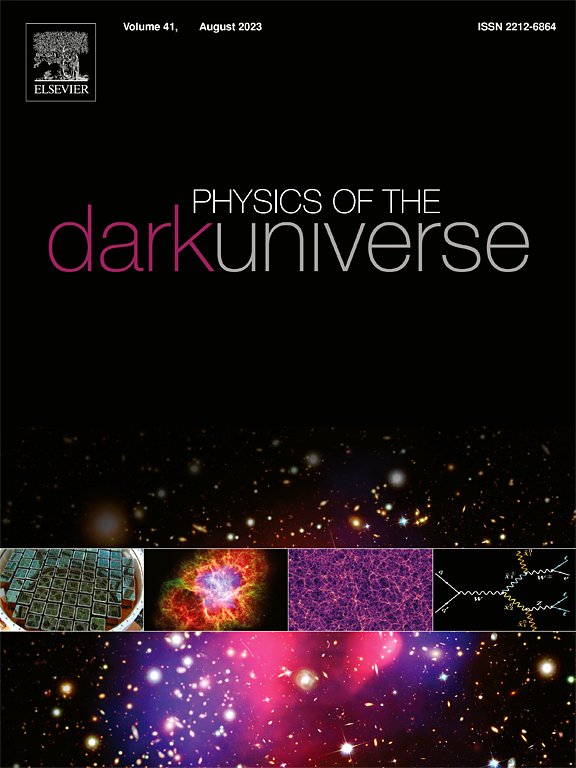Dynamical stability analysis of modified gravity with various interactions
IF 6.4
2区 物理与天体物理
Q1 ASTRONOMY & ASTROPHYSICS
引用次数: 0
Abstract
This study investigates the dynamical stability of cosmological models within the special case of gravity, a modified theory of gravity where non-metricity governs gravitational interactions. We analyze the phase space dynamics of a flat Friedmann–Robertson–Walker (FRW) universe, incorporating three distinct non-linear interaction models between dark energy and dark matter: , , and . By deriving autonomous dynamical equations and evaluating critical points, we assess their stability through eigenvalue analysis. The first two models exhibit stable attractor behavior in the quintessence phase for both dust () and radiation () scenarios, with all eigenvalues being negative. The third model demonstrates stability across phantom, CDM, and quintessence phases, with critical points consistently converging to equilibrium states. Our results highlight the role of non-linear interactions in shaping cosmic evolution, offering viable alternatives to explain late-time acceleration without relying solely on dark energy. The findings underscore the robustness of gravity in describing cosmological dynamics while providing new insights into the universe’s large-scale structure and evolution.
各种相互作用下修正重力的动力稳定性分析
本研究探讨了f(Q)引力的特殊情况下宇宙模型的动力学稳定性,f(Q)引力是一种修正的引力理论,其中非度规性Q控制引力相互作用。我们分析了平面FRW宇宙的相空间动力学,结合暗能量和暗物质之间的三种不同的非线性相互作用模型:Q1=3HbqρD+ρm+ρ ρm+ρ ρm+ρ ρm+ Q2=3HbqρD+ρm+ρD2ρD+ρm, Q3= 3hξ ρ dexp ρ ρm−1。通过推导自主动力学方程和求出临界点,通过特征值分析来评价其稳定性。前两个模型在尘埃(ωm=0)和辐射(ωm=1/3)两种情况下均表现出稳定的吸引子行为,特征值均为负。第三个模型展示了幻影、ΛCDM和精粹阶段的稳定性,临界点一致地收敛到平衡状态。我们的研究结果强调了非线性相互作用在塑造宇宙演化中的作用,提供了可行的替代方案来解释晚时间加速,而不仅仅依赖于暗能量。这些发现强调了f(Q)引力在描述宇宙动力学方面的稳健性,同时为宇宙的大规模结构和演化提供了新的见解。
本文章由计算机程序翻译,如有差异,请以英文原文为准。
求助全文
约1分钟内获得全文
求助全文
来源期刊

Physics of the Dark Universe
ASTRONOMY & ASTROPHYSICS-
CiteScore
9.60
自引率
7.30%
发文量
118
审稿时长
61 days
期刊介绍:
Physics of the Dark Universe is an innovative online-only journal that offers rapid publication of peer-reviewed, original research articles considered of high scientific impact.
The journal is focused on the understanding of Dark Matter, Dark Energy, Early Universe, gravitational waves and neutrinos, covering all theoretical, experimental and phenomenological aspects.
 求助内容:
求助内容: 应助结果提醒方式:
应助结果提醒方式:


